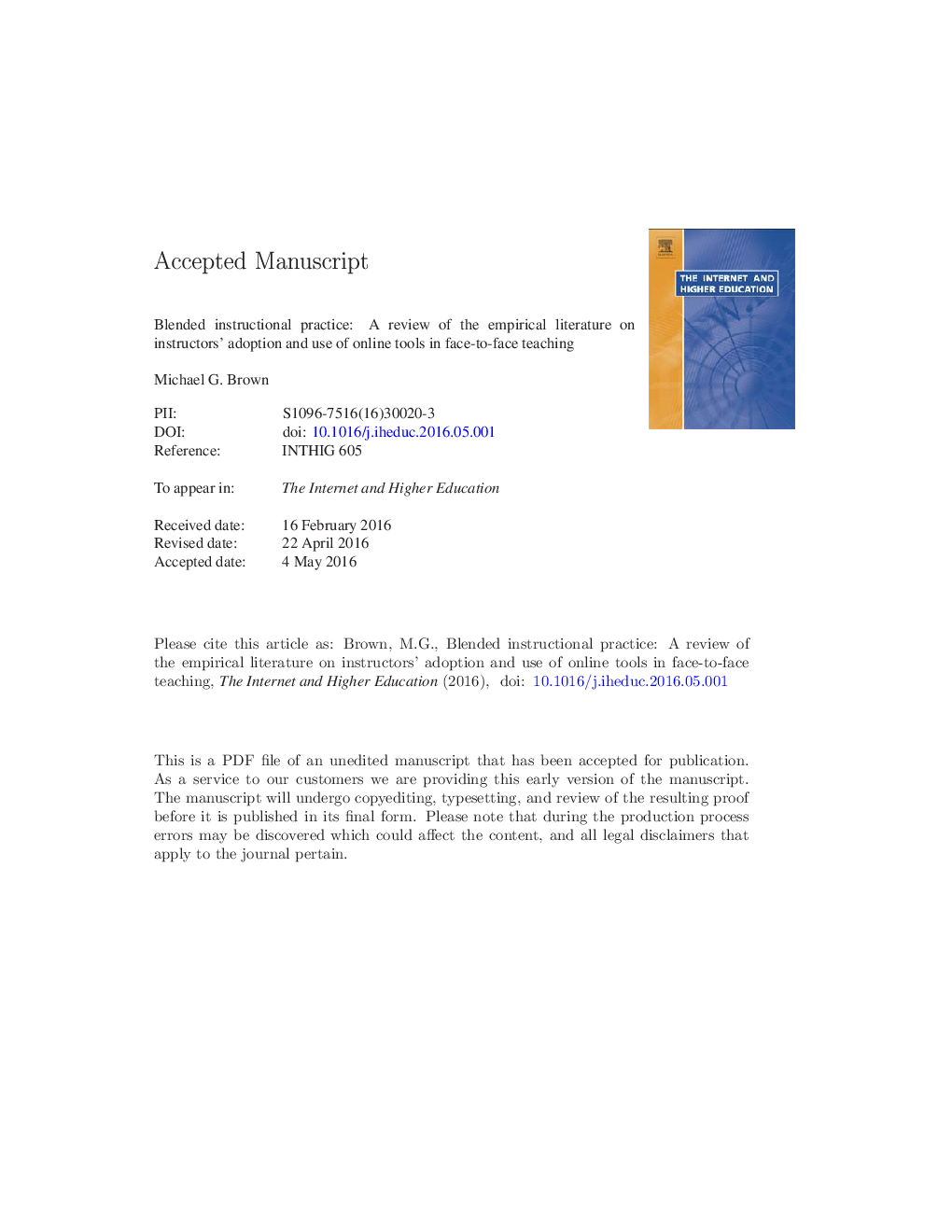| Article ID | Journal | Published Year | Pages | File Type |
|---|---|---|---|---|
| 6841967 | The Internet and Higher Education | 2016 | 45 Pages |
Abstract
College and university instructors are increasingly incorporating online tools into face-to-face teaching approaches, such that blended instruction is forecasted to become “the new traditional model” (Ross & Gage, 2006, p. 168; Norberg et al., 2011, Watson, 2008). Yet, less than 5% of the scholarship on blending in higher education explores academic practice (e.g. teaching, curriculum design, professional development and training for instruction; Torrisi-Steele & Drew, 2013). This discussion reports the results of a systematic review of the literature on faculty member's adoption and use of online tools for face-to-face instruction. Six influences that cut across the literature are identified: faculty member's interactions with technology, academic workload, institutional environment, interactions with students, the instructor's attitudes and beliefs about teaching, and opportunities for professional development. Strengths and limitations of the literature and future directions for research on socio-technical systems of instruction are identified.
Keywords
Related Topics
Social Sciences and Humanities
Social Sciences
Education
Authors
Michael Geoffrey Brown,
